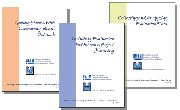Qualitative-based Evidence
Brophy, P. Narrative-Based Practice. EBLIP. 2007. 2:(1):149-158.
In the movement promoting evidence-based library and information practice — defined as use of formalized strategies for including evidence in daily practice – the definition of the body of knowledge constituting “best evidence” continues to evolve. In the two articles cited above, which share the same issue of EBLIP, authors Brophy and Given argue for the inclusion of qualitative studies in that body of knowledge. While quantitative randomized-controlled trial (RCT) studies have long been considered the gold standard for producing evidence in the disciplines embracing evidence-based practice, Brophy and Given both argue that social fields like librarianship must look to qualitative studies to answer questions of “why” and “in what context.” They also argue that we cannot fully understand social context without methods that emphasize listening to people, observing behavior and reviewing textual and pictorial documents.
Brophy’s article, a commentary, promotes use of a database of high quality narratives (or stories) to inform practice – something he calls “narrative-based practice.” He writes “We are more likely to find meaning in the telling of how things have been experienced by others than in the formality of arid statistics and measures.” (p.156) Thus, he believes that narratives must be presented along with statistics to help managers with their “evidence-based” decision making.
Given’s article presents a more informative treatment of qualitative research with examples of its three primary methodologies: interviews; observation; and analysis of textual data (e.g., participant-created documents like journals or existing texts like policy manuals or meeting minutes). She also discusses some standard criteria for assessing qualitative research – which differs considerably from criteria for judging quantitative research.
Any number of articles have been published that argue for the legitimacy of qualitative research, but Brophy and Given go a step further. They believe that qualitative studies are essential to the development of a complete body of knowledge for informing practice.




